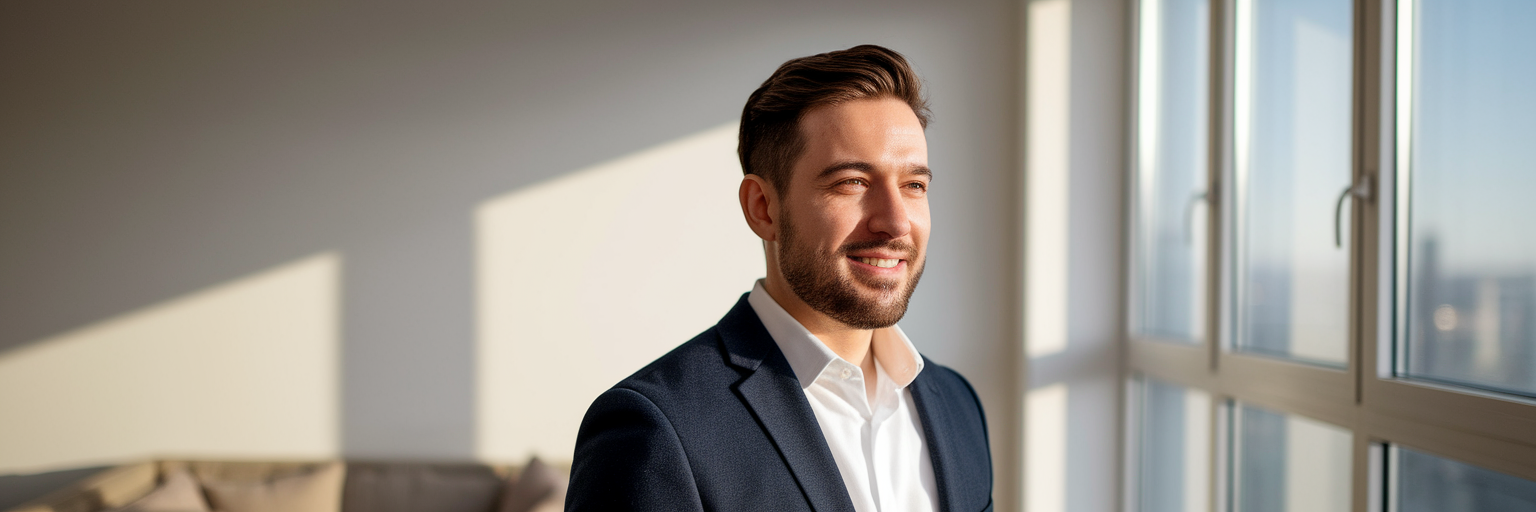Your Digital First Impression Matters
In our professional lives, the first handshake has gone digital. Long before you exchange a word, your headshot has already introduced you. This single image is often the first point of contact on LinkedIn, company websites, or email signatures, and it forms an impression in mere seconds. It sets immediate expectations about your competence, personality, and attention to detail. We all do it; we glance at a photo and make a snap judgment. Is this person credible? Approachable? Meticulous?
A headshot is not just a photograph. It is a strategic asset for your personal brand. It should communicate professionalism and the unique value you bring to the table. A strong, clear photo builds instant credibility, making people more receptive to your message. Conversely, a weak one can introduce subconscious doubt, forcing you to work harder to establish trust. These are some of the most fundamental personal branding photo tips to keep in mind. A well-crafted image is a cornerstone of your professional narrative, a concept explored further in this complete guide to modern business headshots.
Understanding this dynamic is the first step toward improvement. The goal is to identify the common but avoidable professional headshot mistakes that many people make. By addressing them, you can transform your photo from a passive profile placeholder into an active tool that strengthens your brand and opens doors.
Mistake 1: The Outdated or Low-Quality Photo

We have all experienced that moment of confusion when meeting someone for the first time whose profile picture is clearly from a decade ago. This disconnect between your digital presence and your real-life appearance creates a trust deficit. It can be jarring for new contacts and subtly suggests that you are not current or perhaps even hiding something. It is a small detail, but it plants a seed of doubt right from the start.
Beyond being outdated, the technical quality of the photo speaks volumes. A pixelated image, poor focus, or an amateurish crop from a group photo signals a lack of professional care. Think of the classic photo where you can still see the shoulder of the person cropped out. These issues suggest you either did not notice or did not care, neither of which is a good message to send. Here is a simple rule to follow: update your headshot every one to two years, or after any significant change in your appearance, like a new hairstyle or glasses.
Knowing how to improve your headshot is easier than ever. You no longer need to book an expensive, time-consuming studio session. Modern technology, including AI-powered tools, has made obtaining high-resolution, professional-quality photos incredibly accessible and affordable. Fortunately, you no longer need a full studio setup, as you can learn how to take perfect LinkedIn headshots at home with just a few simple steps.
Mistake 2: Inappropriate Wardrobe and Styling
Your clothing choices in a headshot are not just about looking nice; they are about sending the right message. Your wardrobe should be an intentional decision that aligns with your industry and professional identity. The casual hoodie of a tech startup founder sends a very different signal from the tailored suit of a corporate lawyer, but both must look polished and deliberate. The key is to dress in a way that reinforces the brand you want to project.
Certain choices can actively work against you. Busy patterns, large brand logos, or bright neon colors are visual distractions that pull the viewer's focus away from your face. Instead, opt for solid colors in jewel or earth tones that complement your skin tone and do not clash with typical website or profile backgrounds. More importantly, the fit is paramount. An ill-fitting jacket, a gaping blouse, or a wrinkled shirt communicates carelessness. As professional photographers at N. Lalor Photography point out, your wardrobe is critical because it sets the tone for your headshot and can make you appear confident and put-together. When deciding what to wear for headshots, choose an outfit that makes you feel confident and prepare it the day before to ensure it is clean and pressed.
| Guideline | Do | Don't |
|---|---|---|
| Color | Solid, muted, or jewel tones | Loud neons or colors that wash you out |
| Pattern | Subtle textures or no pattern | Busy stripes, large logos, or complex prints |
| Fit | Well-fitted, tailored clothing | Baggy, wrinkled, or overly tight garments |
| Formality | Align with your industry's standard | Wear overly casual or formal attire for your role |
Note: This table provides general guidelines. Always consider your specific industry and personal brand when making final wardrobe decisions.
Mistake 3: Poor Lighting and Distracting Backgrounds

You could have the perfect expression and outfit, but if the lighting is poor, the photo will fail. Lighting is arguably the most critical technical element of a good headshot. Harsh, direct light, like the kind from overhead office fluorescents or the midday sun, creates deep, unflattering shadows under your eyes and nose. Dim, murky light is just as bad, making your photo look unprofessional and gloomy. The goal is to find soft, diffused light. The easiest source to find is natural light from a window on an overcast day or in a spot that is not in direct sun.
Just as important as the light on your face is what is behind you. A cluttered office, a messy room, or a busy street scene competes for the viewer's attention. Your background should support the photo, not detract from it. This is where the design concept of "negative space" comes in. A clean, simple background, like a neutral-colored wall or a subtly blurred professional setting, makes you the undeniable focus. It conveys confidence and clarity. Mastering these elements is essential, and you can learn more by reviewing these photo basics for better results.
- Effective Lighting & Background:
- Soft, natural light from a window.
- A simple, neutral-colored wall.
- A subtly blurred, professional-looking environment.
- The subject is clearly the main focus.
- Ineffective Lighting & Background:
- Harsh overhead fluorescent lighting or direct sun.
- A cluttered office or messy home interior.
- Recognizable landmarks or distracting elements.
- The subject blends in with their surroundings.
Mistake 4: An Inauthentic or Unapproachable Expression
In an attempt to appear "professional," many people adopt a stiff, overly serious expression. This is one of the most common professional headshot mistakes. While competence is key, approachability is what builds connections. Your headshot should invite conversation, not intimidate people. An expression that looks forced or uncomfortable creates a barrier before you have even had a chance to interact. People connect with people, not with corporate masks.
There is a clear difference between a forced, lips-only smile and a genuine "Duchenne smile" that engages the muscles around your eyes. That authenticity signals trustworthiness and warmth. This aligns with insights from branding photographers at Art of Her, who list choosing not to smile as one of the top mistakes people make in their brand photos, as it can make them seem unapproachable. The goal is to project relaxed confidence. An open, friendly expression is an invitation for engagement, making you seem like someone others would want to work with.
- Tips for a Natural Expression:
- Think of a professional achievement you are proud of to evoke genuine confidence.
- Briefly close your eyes and take a deep breath to relax your facial muscles before the shot.
- Have a friend tell you a quick joke or recall a happy memory to bring out a real smile.
- Practice different expressions in a mirror to see what feels most like you.
Creating a Headshot That Builds Your Brand
Your professional headshot is far more than a simple profile picture; it is a powerful tool in your personal branding toolkit. Avoiding common pitfalls is a direct investment in your career. A strong headshot must be current, high-quality, appropriately styled, well-lit, and authentic. Each of these elements works together to build a cohesive and credible first impression that can open doors to new opportunities.
Fortunately, crafting this image is more accessible than ever. Modern technology now empowers professionals to generate multiple studio-grade options from their own photos, giving individuals complete control over their image. This approach bypasses the high costs and scheduling challenges of traditional photoshoots, making it one of the most effective LinkedIn profile picture tips available today. Once your photo is perfect, ensure the rest of your profile is just as strong with a powerful LinkedIn headline generator. Your best self is ready for its close-up.


